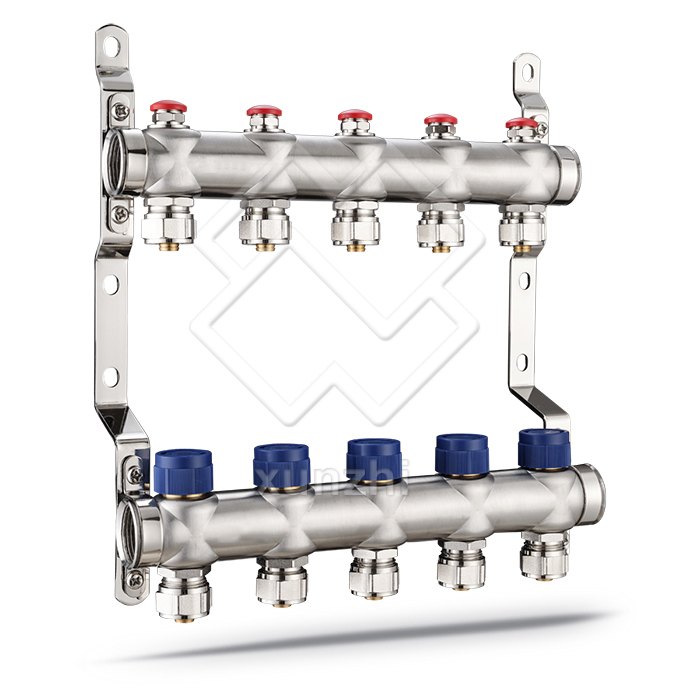A radiant heat manifold is an essential component of a radiant heating system. It is a central hub that controls the flow of hot water or other heating fluids through the system, ensuring that each room or zone in the building is heated efficiently and effectively. In this article, we will discuss the benefits of using a radiant heat manifold and how it works.
One of the primary benefits of using a radiant heat manifold is that it allows for precise control of the heating system. The manifold is typically designed with multiple outlets or ports, each of which can be connected to a separate heating zone in the building. By controlling the flow of water or heating fluid through each zone, the manifold can ensure that each area is heated to the desired temperature, without wasting energy or overheating other areas.
Another benefit of using a radiant heat manifold is that it can simplify the installation process. Rather than running multiple pipes or hoses from the heating source to each zone, the manifold allows for a single connection point. This can reduce the amount of piping and connections required, making the installation process quicker and easier.
Radiant heat manifolds work by using a series of valves to control the flow of water or heating fluid through the system. Each valve is connected to a separate zone or room, allowing for precise control over the heating in each area. The manifold is typically located near the heating source, such as a boiler or hot water heater, and the heated fluid is distributed through the system using pipes or hoses.
To install a radiant heat manifold, it is important to select the correct size and type for the heating system. The manifold should be sized to match the heating capacity of the system, and it should be compatible with the type of heating fluid being used. The manifold should be installed in a central location that is easily accessible for maintenance or repairs.
In addition to controlling the flow of heating fluid, some radiant heat manifolds also include additional features such as temperature gauges or flow meters. These can provide valuable information about the performance of the heating system, allowing for adjustments or repairs to be made as needed.
In conclusion, a radiant heat manifold is an important component of a radiant heating system, allowing for precise control of the heating in each room or zone of the building. Its benefits include reducing energy waste, simplifying the installation process, and providing valuable information about the system's performance. When selecting and installing a radiant heat manifold, it is important to work with a qualified heating professional to ensure a successful and efficient installation.

